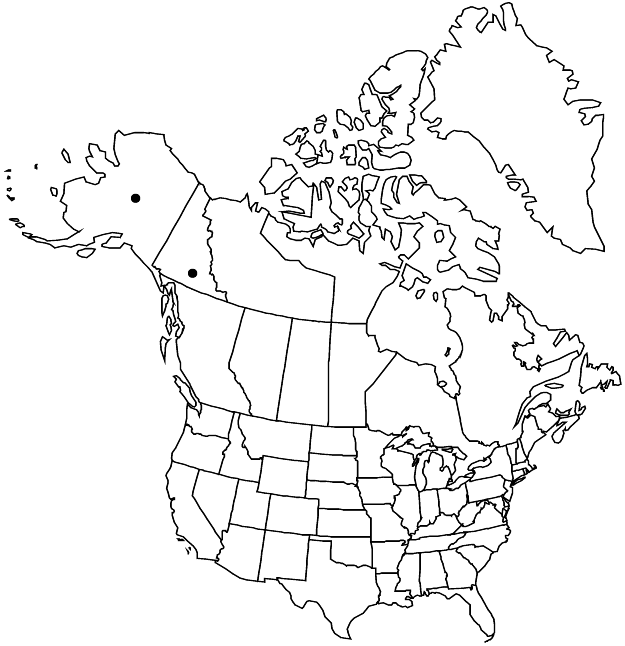Rumex beringensis
Bot. Zhurn. (Moscow & Leningrad) 58: 1745. 1973.
Plants perennial, glabrous, with thick, densely tufted underground stolons. Stems erect, rarely ascending, several from base, branched in inflorescence, 5–15 (–20) cm; shoots usually densely crowded, not elongated. Leaves: ocrea brownish or reddish-brown, membranous; blade linear or spatulate-lanceolate, not hastate (without basal lobes), 1.5–5 × 0.1–0.3 cm, base narrowly cuneate (gradually narrowing into petiole), margins entire, flat or slightly convolute, apex obtuse or subacute. Inflorescences terminal, occupying more than distal 1/2 of stem, ± dense, usually interrupted at least near base, narrowly paniculate with branches directed upward. Pedicels 1–4 mm. Flowers (3–) 4–7 in whorls; inner tepals distinctly enlarged, 1.6–2.3 × 1.8–2.5 mm (free wing 0.3–0.5 mm wide), base cuneate, apex obtuse or subacute. Achenes brown or reddish-brown, 1–1.5 × 0.8–1.2 mm. 2n = 14.
Phenology: Flowering summer.
Habitat: Sandy and gravelly soil, shores, limestone outcrops
Elevation: 0-300 m
Distribution

Yukon, Alaska, ne Asia (ne Russian Far East)
Discussion
The name Rumex graminifolius was commonly misapplied to this species in both northwestern North America and northeastern Eurasia.
Selected References
None.
Lower Taxa
"/2" is not declared as a valid unit of measurement for this property.